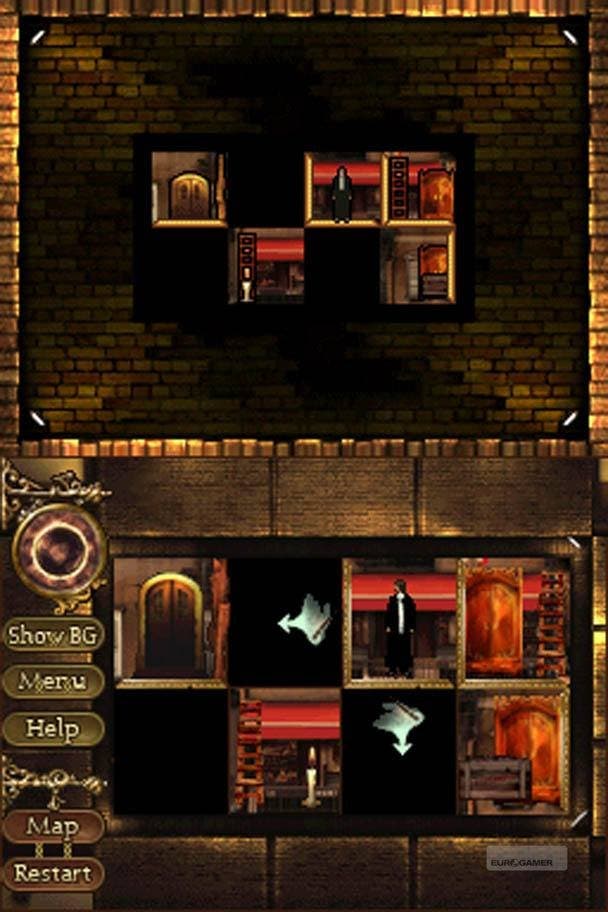Rooms: The Main Building
Sliding doors.
The slide puzzle: crutch of every tired, lazy or creatively bankrupt game designer. Used to bulk out countless adventure games, these pictorial conundrums - in which you slide tiles one by one around a bordered play area while attempting to arrange them to create a picture - predate videogames by some margin. And yet there's gold in these simple clichés for the talented contemporary designer to uncover, as their occasional appearances in the Professor Layton series have demonstrated, with some cute twists on the antiquated formula.
Rooms: The Main Building goes one step further by attempting to build an entire game around the slide puzzle template, one complete with its own narrative, characters and film noir ambiance. Not only that, but its Korean designers layer new mechanics on top of the core slide puzzle system, multiplying its complexity in an effort to, presumably, match its aspiration to a full-scale DS release. Ambitious? Yes. Successful? No.
Those who abhor this micro-genre will relate to protagonist Mr X, who finds himself literally trapped within the puzzles, desperate to escape their transient confines. The primary aim in each puzzle is to guide Mr X to the exit door, contained within one of the slide tiles. To do this you'll need to slide the tiles around the board in order to create walkways for Mr X to traverse.

Some tiles have walls on one side or a solid ceiling or floor, preventing access to the adjacent tile. Others contain ladders allowing you to climb up into the tile above. Each puzzle is solved by manoeuvring tiles in such a way as to allow Mr X to make his way to the exit point, the solution arrived at either by a process of trial and error or careful planning, depending on your approach and mentality.
Initially, levels contain just a handful of tiles, complexity scaling as the game progresses through the introduction of more tiles per level, and more interactive features within those tiles. Telephones allow you to teleport from one tile to another, while stepping into a wardrobe will swap that tile with a second, rearranging the play area without the need to move any other pieces.
Tinderboxes positioned next to weak walls can be destroyed with a stick of dynamite picked up elsewhere in the puzzle, thereby creating new walkways. Then, of course, these gently imaginative metaphors are bolstered by endless key-and-locked-door aspects to each puzzle. By layering these features on top of the slide puzzle, the density of each puzzle is increased, until you're juggling a dizzying number of considerations while groping around for a solution.








